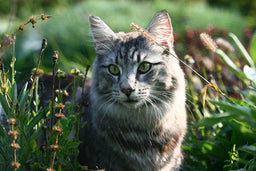
A community of cat lovers
Need support with looking after your pet? Browse our help topics and see what others have to say.


Are Siamese cats friendly? Find out here!
2024/21/05

Are Ragdoll cats friendly? Find out here!
2024/28/04

Norwegian Forest cat tabby mix—learn to recognise a Wegie
2022/05/09

What’s the average Norwegian Forest cat size you can expect?
2022/05/09

Do Russian Blue cats shed? 4 red flags to watch out for!
2022/04/09

Norwegian Forest cat ear tufts—explained in detail
2022/03/09

Do Norwegian Forest cats like water? Explained in detail
2022/02/09

Norwegian Forest cat colours and patterns in a nutshell
2022/02/09

Submit a question
Our purrfect team would love to help you with your questions and cat needs.
Get in touch

